|
80x5 -
240x3 -
240x4 -
320x1 -
320x2 -
320x3 -
640x1 -
640x2
Set display option above.
Click on
images to enlarge. |
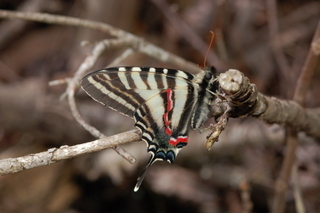
© John Pickering, 2004-2023
· 10
Eurytides marcellus, Zebra swallowtail |
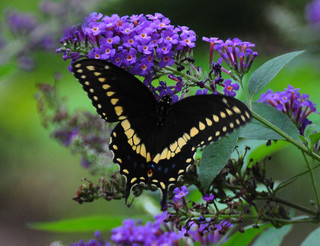
© Copyright Sheryl Pollock 2011
· 9
Papilio polyxenes, Black Swallowtail Male |
|
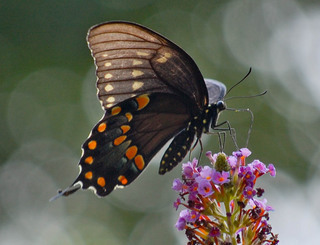
© Copyright Sheryl Pollock 2011
· 8
Papilio troilus, Spicebush Swallowtail Male |
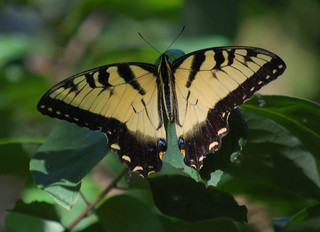
© Copyright Sheryl Pollock 2011
· 8
Papilio glaucus, Tiger Swallowtail male |
|
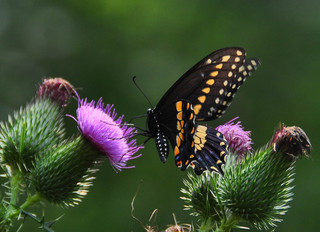
© Copyright Sheryl Pollock 2011
· 8
Papilio polyxenes, Black Swallowtail Male |
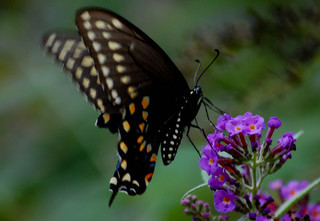
© Copyright Sheryl Pollock 2011
· 8
Papilio polyxenes, Black Swallowtail Female |
|
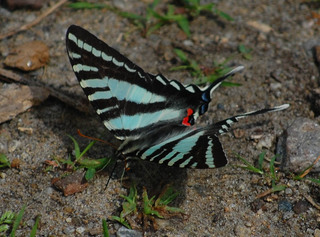
© Copyright Sheryl Pollock 2011
· 8
Eurytides marcellus, Zebra Swallowtail |
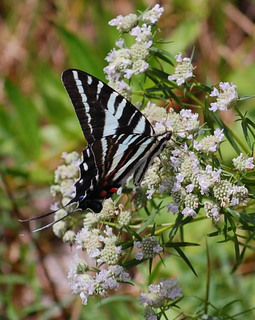
© Copyright Sheryl Pollock 2011
· 8
Eurytides marcellus, Zebra Swallowtail |
|
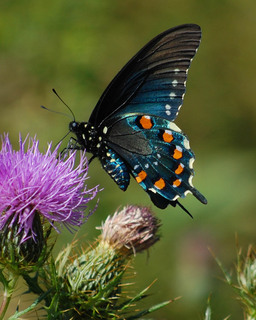
© Copyright Sheryl Pollock 2011
· 7
Battus philenor, Pipevine Swallowtail |
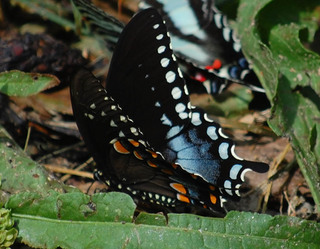
© Copyright Sheryl Pollock 2011
· 7
Papilio troilus, Spicebush Swallowtail |
|
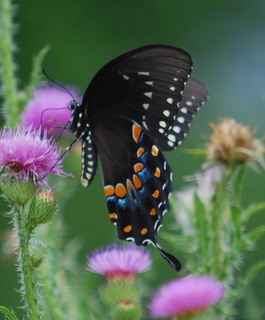
© Copyright Sheryl Pollock 2011
· 7
Papilio troilus, Spicebush Swallowtail |
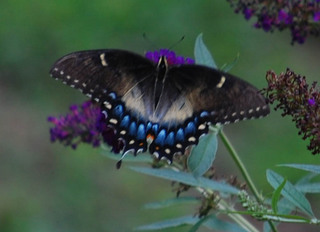
© Copyright Sheryl Pollock 2011
· 7
Papilio glaucus, Eastern Tiger Swallowtail intermediate form |
|
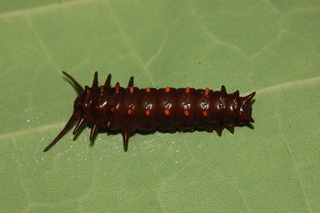
© John Pickering, 2004-2023
· 7
Battus philenor, Pipevine Swallowtail, larva |
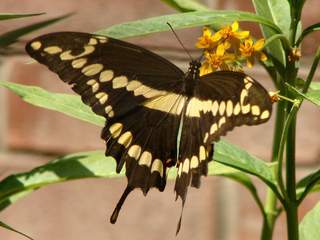
© Justin Valleau, 2007
· 6
Papilio cresphontes |
|
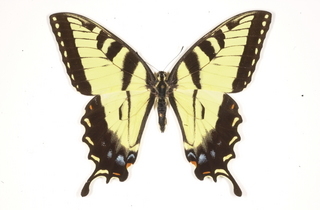
© John Pickering, 2004-2023
· 1
Papilio glaucus, top |
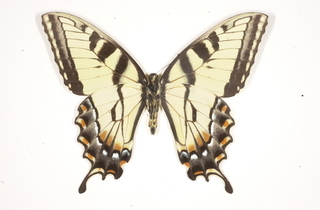
© John Pickering, 2004-2023
· 1
Papilio glaucus, bottom |
|
Overview | |
The family Papilionidae is composed mainly of Swallowtails and Apollos (Parnassians). These large, beautifully-colored butterflies
can be found throughout the world. As with most insects, swallowtail diversity is concentrated in the tropics,
although some are found in Arctic regions. Collectively, there are about 534 species in Papilionidae. Thirty of these
species make their home in North America. Most are found in the southern United States.
Butterflies develop through several sequential stages, from egg to larva to pupa, and then to adulthood. These stages are
called metamorphosis. Swallowtail pupae have two head horns and a prong on their thorax. They use a silk girdle to attach themselves
to surfaces. Pupae often mimic their surroundings to hide from predators. They often hibernate. Swallowtail larvae have no spines
but do possess an osmeterium, a special gland that is used to inhibit potential predators by releasing foul-smelling acids.
They feed on plants in the Rosaceae (Roses) family, and some primitive plants like Magnoliaceae (Magnolia)
and Lauraceae (Laurel).
Parnassian larvae rarely use their osmeteria. When young, the larvae have short hairs on the sides of their body. Eventually, these
hairs completely cover the larvae. Parnassian larvae eat Aristolochiaceae (Wild Ginger, Birthwort),
Crassulaceae (Stonecrop), and Fumariaceae (Poppy), among other plants.
Apollos can pupate underground or under rocks. They sometimes create a silk cocoon when pupating. The eggs and pupae occasionally
hibernate. Some experts believe that Parnassian larvae mimic millipedes.
Swallowtails and Apollos rest with their wings spread. When on the move, adults can fly quite fast due to their size, but flap
their wings slowly. Swallowtails flutter their wings while feeding. All Papilionidae adults feed on flowers.
|
|
|
Links to other sites | |
|
|
|
References |
- Scott, James A. 1986. The Butterflies of North America. Standford University Press, Stanford, California. ISBN 0-8047-1205-0.
|
|
|
Acknowledgements | |
We thank Becca Haynes for help photographing butterflies and developing the butterfly pages,
Nancy Lowe for illustrations, Brian Scholtens of the College of Charleston for providing support,
and Cecil Smith and the University of Georgia's Natural History Museum Entomology Collections
for loaning us specimens.
|
|
| Supported by | |
Updated: 2024-04-25 23:25:05 gmt
|